
AlphaLISA Human Tissue Plasminogen Activator Detection Kit, 5,000 Assay Points
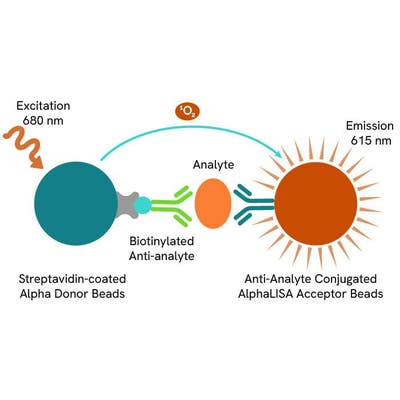

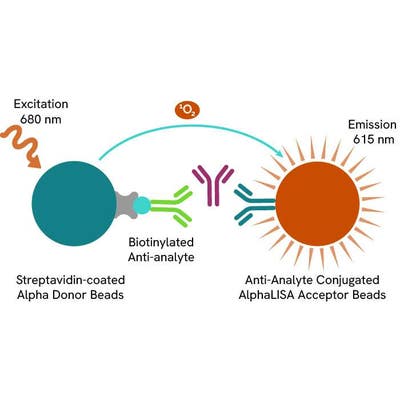 View All
View All
AlphaLISA Human Tissue Plasminogen Activator Detection Kit, 5,000 Assay Points
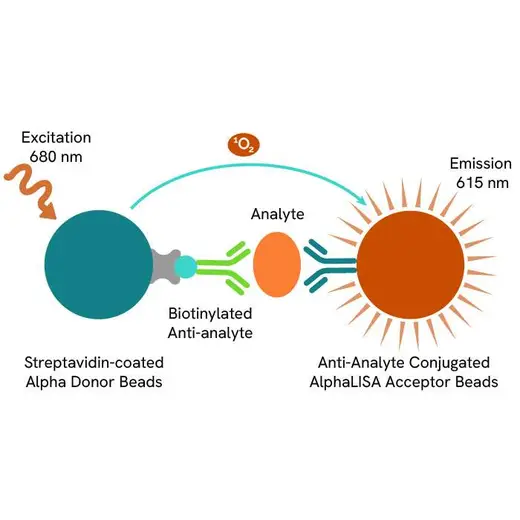

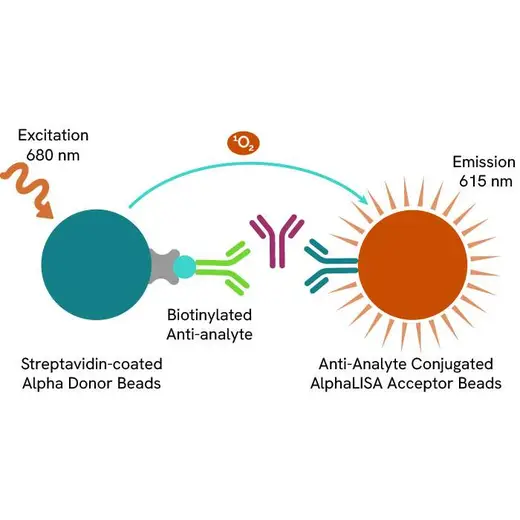




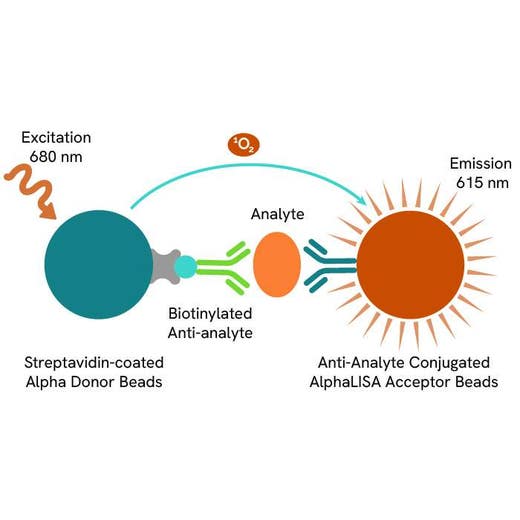

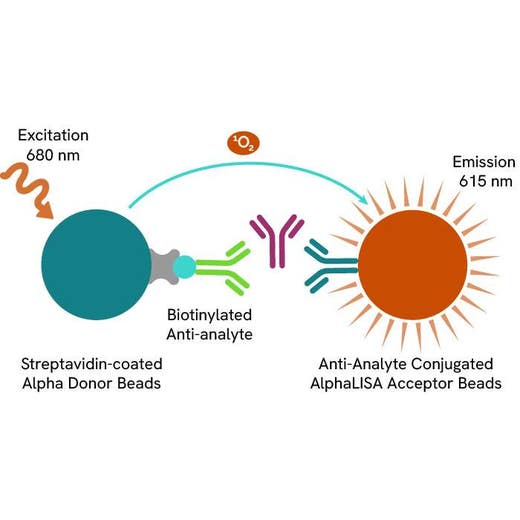




The AlphaLISA™ Human Tissue Plasminogen Activator (tPA) Detection Kit is designed for detection and quantitation of human tPA in serum, buffered solution or cell culture medium in a homogeneous (no-wash steps, no separation steps) assay. The kit was designed to detect both tPA and pro-tPA.
For research use only. Not for use in diagnostic procedures. All products to be used in accordance with applicable laws and regulations including without limitation, consumption and disposal requirements under European REACH regulations (EC 1907/2006).
| Feature | Specification |
|---|---|
| Application | Protein Quantification |
| Dynamic Range | 11.1 - 300,000 pg/mL |
| Limit of Detection | 11.1 pg/mL |
| Sample Volume | 5 µL |
The AlphaLISA™ Human Tissue Plasminogen Activator (tPA) Detection Kit is designed for detection and quantitation of human tPA in serum, buffered solution or cell culture medium in a homogeneous (no-wash steps, no separation steps) assay. The kit was designed to detect both tPA and pro-tPA.
For research use only. Not for use in diagnostic procedures. All products to be used in accordance with applicable laws and regulations including without limitation, consumption and disposal requirements under European REACH regulations (EC 1907/2006).







AlphaLISA Human Tissue Plasminogen Activator Detection Kit, 5,000 Assay Points







AlphaLISA Human Tissue Plasminogen Activator Detection Kit, 5,000 Assay Points







Product information
Overview
Formats:
- Our 500 assay point kit allows you to run 500 wells in 96-well or 384-well format, using a 50 µL reaction volume (5 µL of sample).
- Our 5,000 assay point kit allows you to run 5,000 wells in 96-well or 384-well format, using a 50 µL reaction volume (5 µL of sample).
Features:
- No-wash steps, no separation steps
- ELISA alternative technology
- Sensitive detection
- Broad sample compatibility
- Small sample volume
- Results in less than 3 hours
- Half the time of an ELISA assay
Tissue Plasminogen Activator (tPA) is a 59 kDa secreted serine protease that converts the proenzyme plasminogen to plasmin, a fibrinolytic enzyme. It is synthesized in numerous tissues and is the principal endogenous activator of plasminogen in blood. It plays a role in cell migration and tissue remodeling. Increased enzymatic activity causes hyperfibrinolysis, which manifests as excessive bleeding; decreased activity leads to hypofibrinolysis that can result in thrombosis or embolism. Rapid fluctuations in tPA concentration can be observed in response to exercise, venous occlusion, alcohol, and drugs, such as anabolic steroids. Individuals who do not show increased tPA activity when exposed to some of these stimuli, may be at risk for deep vein thrombosis.
AlphaLISA technology allows the detection of molecules of interest in a no-wash, highly sensitive, quantitative assay. In an AlphaLISA assay, a biotinylated anti-analyte antibody binds to the Streptavidin-coated Donor beads while another anti-analyte antibody is conjugated to AlphaLISA Acceptor beads. In the presence of the analyte, the beads come into close proximity. The excitation of the Donor beads causes the release of singlet oxygen molecules that triggers a cascade of energy transfer in the Acceptor beads, resulting in a sharp peak of light emission at 615 nm.
Specifications
| Application |
Protein Quantification
|
|---|---|
| Automation Compatible |
Yes
|
| Brand |
AlphaLISA
|
| Detection Modality |
Alpha
|
| Dynamic Range |
11.1 - 300,000 pg/mL
|
| Limit of Detection |
11.1 pg/mL
|
| Product Group |
Kit
|
| Sample Volume |
5 µL
|
| Shipping Conditions |
Shipped in Blue Ice
|
| Target |
tPA
|
| Target Class |
Biomarkers
|
| Target Species |
Human
|
| Technology |
Alpha
|
| Therapeutic Area |
Cardiovascular
|
| Unit Size |
5,000 Assay Points
|
Image gallery






AlphaLISA Human Tissue Plasminogen Activator Detection Kit, 5,000 Assay Points






AlphaLISA Human Tissue Plasminogen Activator Detection Kit, 5,000 Assay Points






Video gallery

AlphaLISA Human Tissue Plasminogen Activator Detection Kit, 5,000 Assay Points

AlphaLISA Human Tissue Plasminogen Activator Detection Kit, 5,000 Assay Points

Resources
Are you looking for resources, click on the resource type to explore further.


How can we help you?
We are here to answer your questions.






























